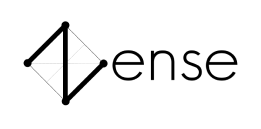Yocto-½v0.1
Yocto-½v0.1A Turing Machine, the Yocto-½. This will be the main branch with side branches of from it. This project was started around August 2021.
Currently Runs:
Visual Main: An addition code that bits on the input tape in the form A1B1A2B2A3B3... and outputs the result into the output buffer
Efficient Main: Test code
The 256-Series:
https://circuitverse.org/users/4699/projects/256-series
Features:
It's a Turing Machine.
Main with visuals demonstrates a the machine operating visually, with the tape clearly seen.
Visual main can only have up to 16 states
Efficient main could have up to 65536 states
From each state it can write to the tape and output, and jump to another state depending on what value is in the selected memory cell
It can also move up/down from each memory cell
In theory one can have as much memory as one wants
Easily expandable tape
Easily expandable output buffer
Previous Updates:
Updates:
Started the project
Made visual main
Made efficient main 1
Future Updates:
Basic program to help assemble code
More demonstration codes that demonstrate what Turing Machines are for
Design:
A Turing Machine is a basic machine designed by Alan Turing for the purpose of exploring whether certain problems (most notably the Halting Problem) are computable. A Turing Machine operates on a hypothetical infinite tape, which has discrete cells, which can hold a character from some limited alphabet, in this case the binary digit 0 and 1. The machine itself has some internal state, which determines how it acts. The Turing machine will read the character in the cell it is, and combine that with its state to determine what to do. It can do three basic things, which are to write to the tape, shift the tape by 1 cell to the left/right, and change its own internal state. Despite the limited action set, a Turing Machine can simulate any computable algorithm.







